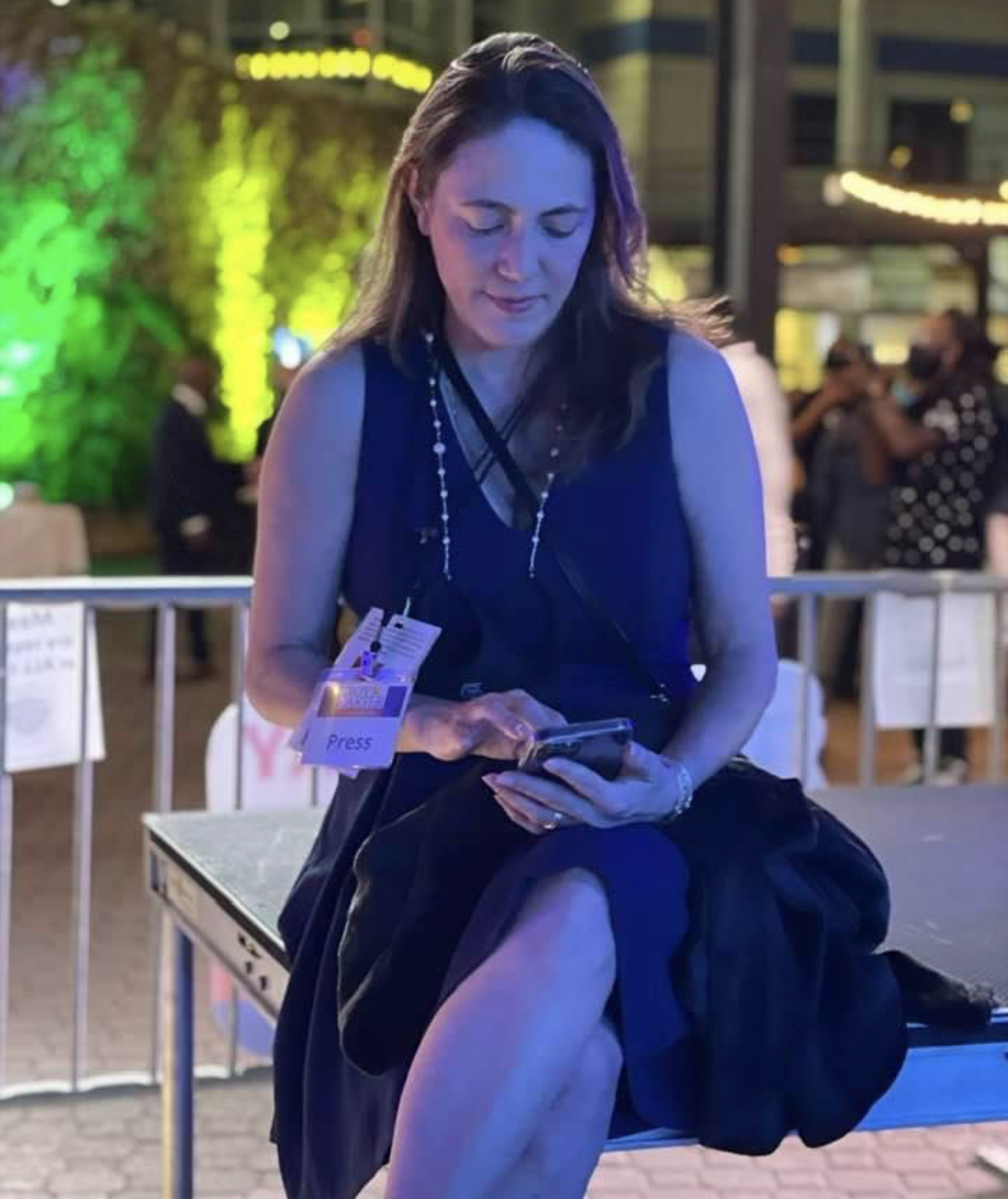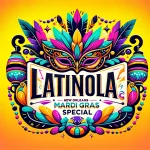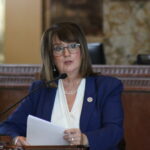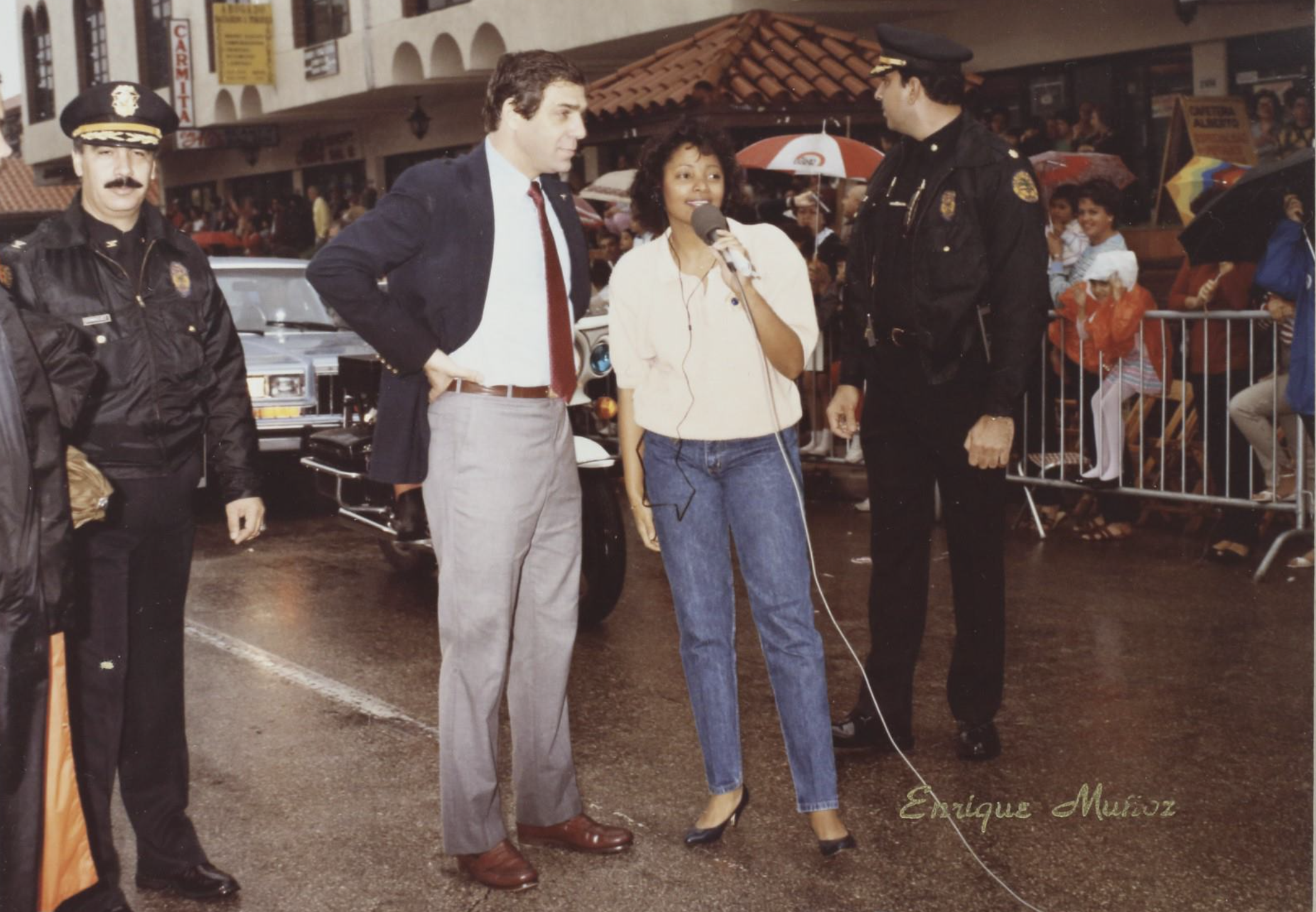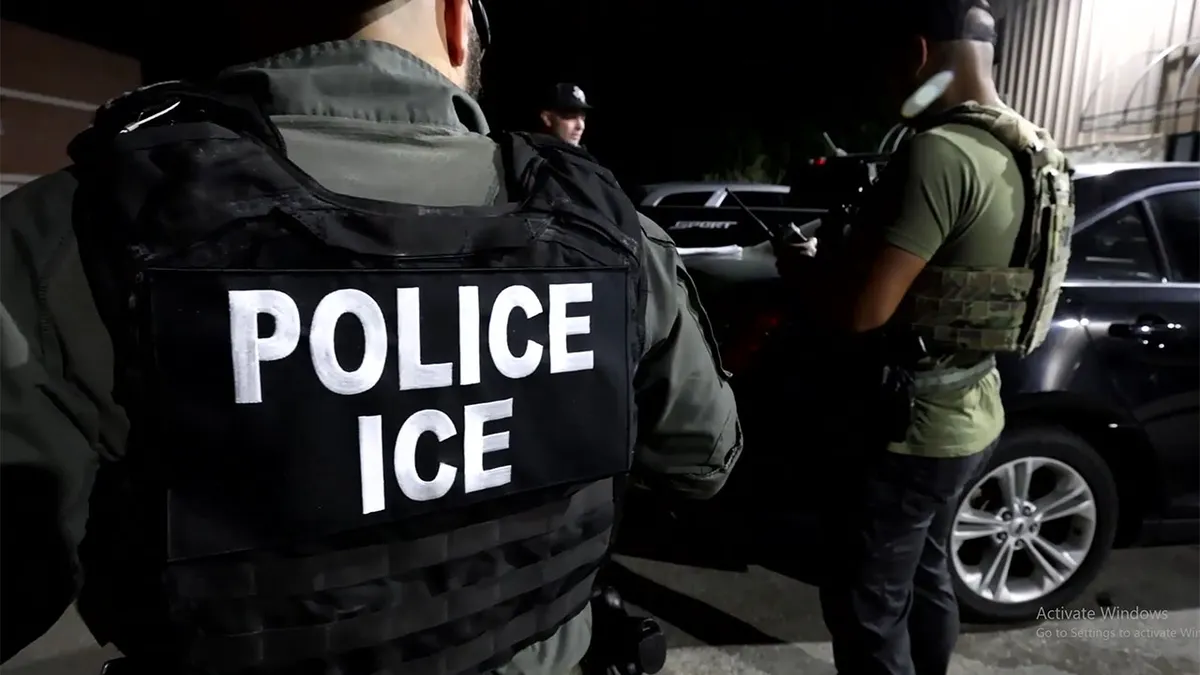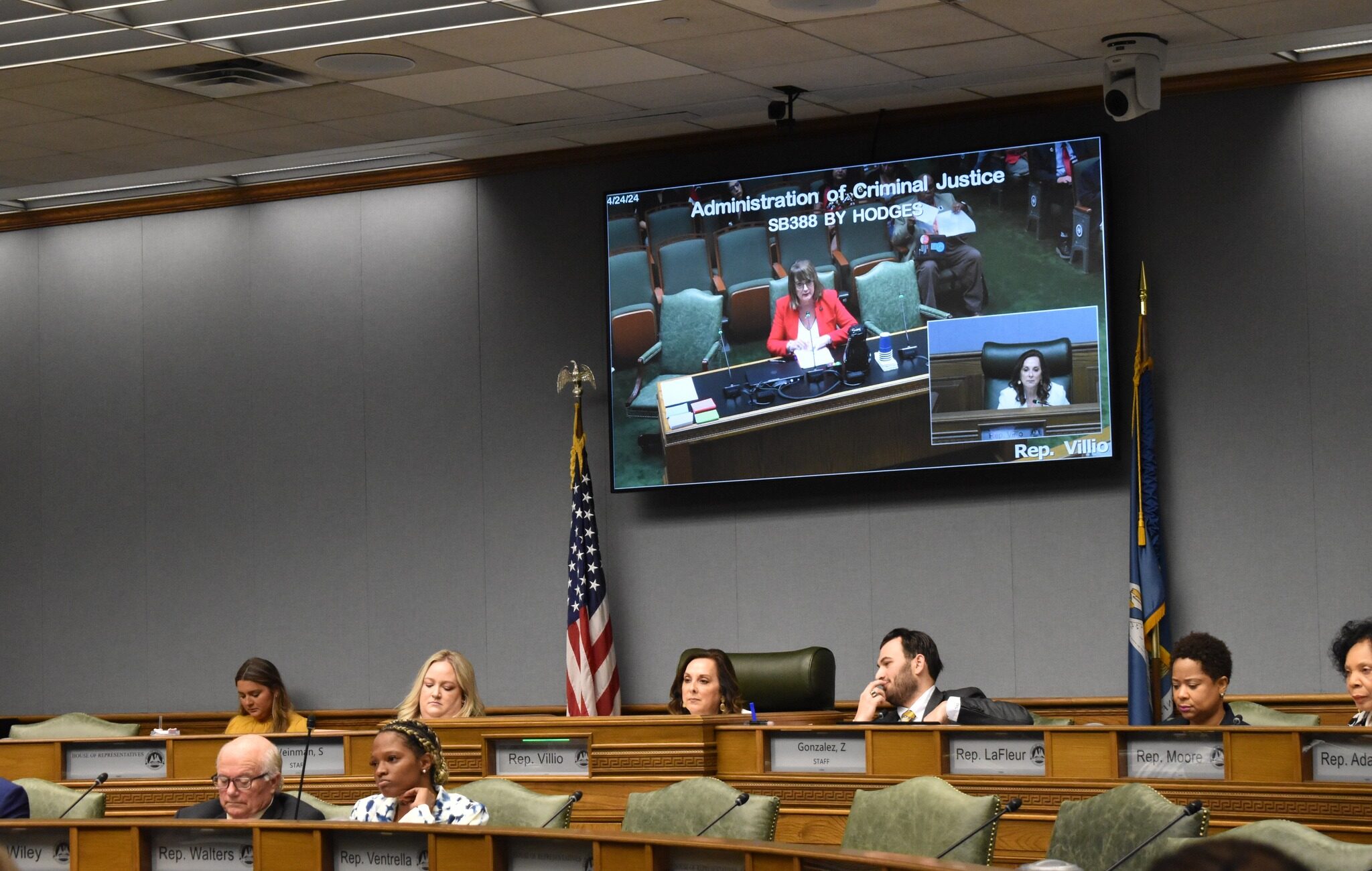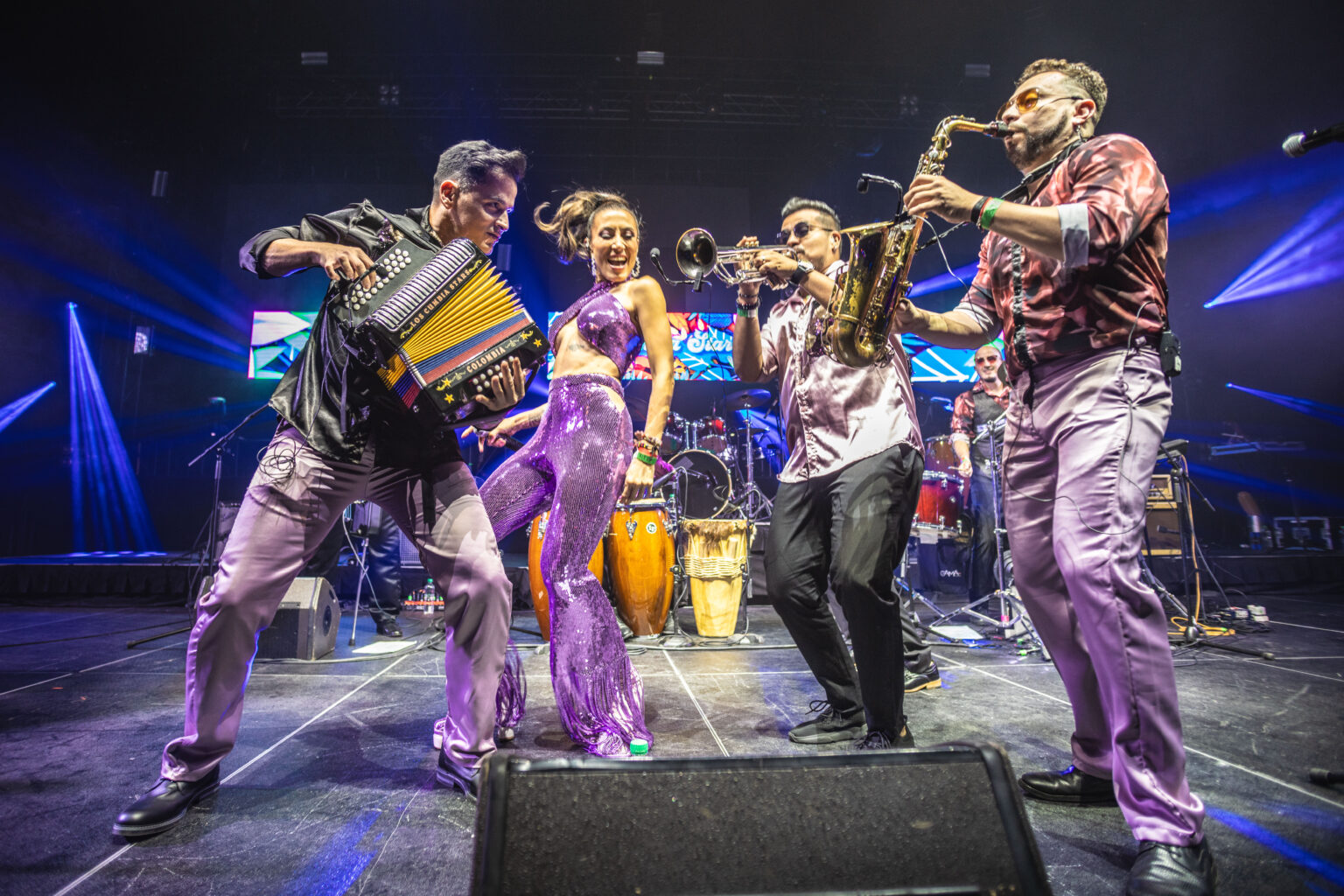“¡De última hora! Latinas Report Breaking News” Opens Sept. 15
Television is powerful, and millions of Americans see their community in Spanish-language TV. “¡De última hora! Latinas Report Breaking News,” is a bilingual exhibit opening Sept.15 at the Smithsonian’s National Museum of American History. It showcases the work of Latina journalists and how they wrote the first draft of history for major U.S. events for the Spanish-language communities they report on and for. Working in the fast-paced, ever-changing environment of broadcast news, these journalists became powerful advocates for their communities and report the breaking news that is de última hora.
The relationship between Spanish-language TV and American history is explored in the exhibition through the collective experience of seven journalists as examples of the ways Latinas have reported on historic events for Spanish-speaking communities. Ilia Calderón, Dunia Elvir, Marilys Llanos, Gilda Mirós, Lori Montenegro, María Elena Salinas and Blanca Rosa Vílchez illustrate the community-centered journalism that has become the hallmark of U.S. Spanish-language TV.
“From the beginning, Spanish-language stations offered women opportunities to break the glass ceiling in ways English stations did not,” said Kathleen Franz, the exhibition’s project director and chair of the museum’s Work and Industry Division. “By sharing stories about these journalists, we can see how Spanish-language TV gave voice and visibility to a large segment of the American public. As a nation, we cannot understand the history of American broadcasting without the inclusion of Spanish-language TV.”
Spanish-language TV has a long history in the continental U.S., with San Antonio widely recognized for the importance of the 1954 FCC license to Latino owned and operated KCOR-TV, now KWEX, which first broadcast in 1955. In Puerto Rico, WKAQ-TV is the first TV station licensed in 1954 and on the air that year. The journalists’ career trajectories reflect the development of networks beginning with the Spanish International Network to the critical growth of Univision and Telemundo in the late 1980s to today.
Early Spanish-language stations covered the changing politics and economics of Mexico, Central and South America when no other American-based networks did so. They also reported on issues of importance to local Latina/o communities related to immigration, education and health care that English-language stations often minimized or ignored.
The exhibition provides a look at the different paths Latinas took to arrive at their profession and the tools of the TV journalism trade: reporter’s notebooks, microphones, press badges and media credentials, wardrobe choices, shoes and even a can of hairspray. A multi-media video narrated by Maria Elena Salinas showcases the work of Latina reporters and anchors, on the scene and on the air. The approximately five minute video was created by dexpósito & Partners, an independent, women and minority owned agency based in New York.
The Collection
“Escuchame: The History of Spanish Language Broadcasting in the U.S.” is the museum’s initial initiative to document the history of Spanish-language TV from the 1950s to today. It began in 2015 and has resulted in approximately 100 oral histories and substantial archival materials, including photographs and objects. Additional artifacts are on view elsewhere in the museum, including the Aztec head landmark from the original KWEX-TV building in San Antonio. The museum will continue to research and document the story of U.S. Spanish-language TV.
Language
¡De última hora! provides a unique opportunity for the museum to showcase an American story and history in which the Spanish language stands at the center, emphasizing that Spanish is an American language. The bilingual curatorial team members crafted the exhibition’s labels in Spanish first before working on the English version of the exhibition. Spanish speakers can experience an exhibition in which a majority of the content originated at TV networks that envisioned them as the central audience. The exhibition also seeks to engage a diverse audience, including those who may be unaware of the power and prominence of U.S. Spanish-language TV.
Opening Program and Educational Materials
On Sept. 13, the museum will mark the opening of ¡De última hora! Latinas Report Breaking News,” with a sneak peek preview of the exhibition at 4 p.m. followed by a panel discussion at 5 p.m. The featured journalists in the exhibition have all confirmed their participation. Tickets are required for the event; they are free and can be reserved through Eventbrite.
“Latinas Talk Latinas,” a video series produced in collaboration with the Smithsonian’s National Museum of the American Latino, will feature several episodes on Latina journalists, including Jovita Idár, a journalist, teacher and civil rights leader who worked in the early 1900s, and Martha Tijerina, whose groundbreaking show, “En San Antonio” on KWEX-TV gave voice to the city’s Chicano and Mexican American civil rights activists, educators and leaders beginning in the early 1970s. Images of Idár and Tijerina are in the exhibition. The “Latinas Talk Latinas” series is on the museum’s Latino History Hub page.
The exhibition is made possible by the support of George L. Pla; Guillermo Nicolas, in honor of Irma and Emilio Nicolas Sr.; and Ambassador Nicholas F. Taubman and Mrs. Eugenia L. Taubman, with federal support from the Latino Initiatives Pool, administered by the National Museum of the American Latino/con apoyo federal del Fondo de Iniciativas Latino, administrado por el Museo Nacional del Latino Estadounidense.
About the National Museum of American History
Through incomparable collections, rigorous research and dynamic public outreach, the National Museum of American History seeks to empower people to create a more just and compassionate future by examining, preserving and sharing the complexity of our past. The museum, located on Constitution Avenue N.W., between 12th and 14th streets, is open daily except Dec. 25, between 10 a.m. and 5:30 p.m. Admission is free. The doors of the museum are always open online and the virtual museum continues to expand its offerings, including online exhibitions, PK–12 educational materials and programs. The public can follow the museum on social media on Twitter, Instagram and Facebook. For more information, visit the museum’s website. For Smithsonian information, the public may call (202) 633-1000.


